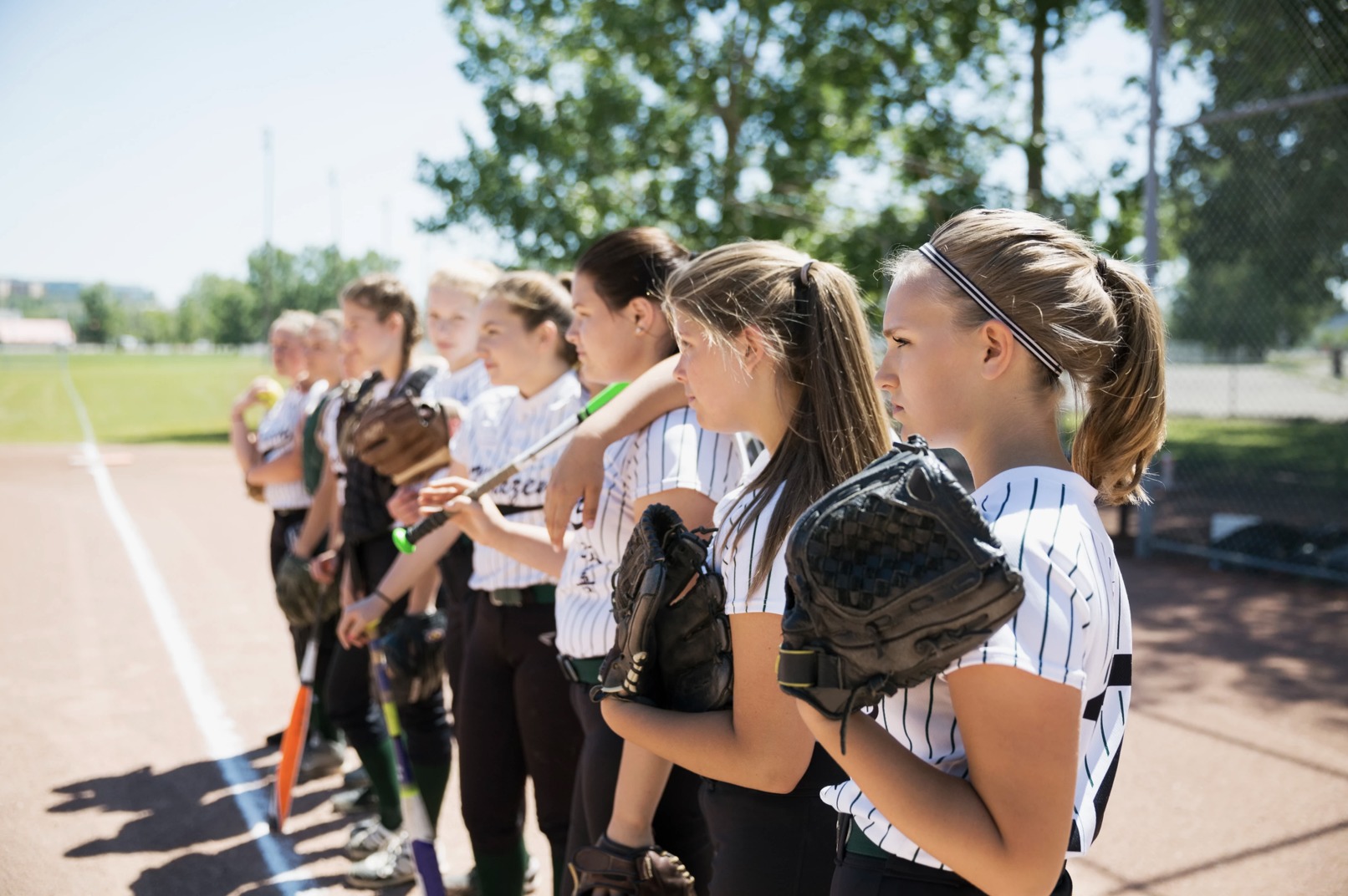Concussion Part 2 – Concussion in the Assigned Female At Birth Athlete
In the sports injury literature, there is a huge discrepancy in the amount of research done in assigned male at birth (AMAB) compared to assigned female at birth (AFAB) athletes, and this discrepancy is even more so seen in concussion research. In recent years, we have begun to see trends showing that AFABs experience concussion differently than AMABs. In this post, I’m going to talk about what we know so far from the literature, why we may be seeing these results, and where we need to go from here.
Occurrence
Concussion occurrence is consistently higher in AFABs than AMABs across several age and sport categories. In sports such as basketball, where the amount of contact is similar in both male and female iterations of the sport, AFABs show a higher occurrence of concussion; but also, in sports such as ice hockey, where females have significantly less collisions and contact compared to their male counterparts, we STILL see a higher occurrence of concussion. While we cannot say for certain why this happens, there are a few theories that have been proposed:
Smaller head to neck ratio
- As we went over in my first blog post about concussions, concussions are caused by an acceleration or deceleration force to the brain. AFAB’s necks are generally thinner and weaker than AMAB’s, and therefore, are less able to control the movement of the head via the neck when an impact occurs. More force is then delivered to the head and brain, resulting in a higher occurrence of concussion, and potentially resulting in more severe injury.
- There is evidence as well that AFABs have a lower biomechanical threshold for concussion, i.e. it will take less force to produce a concussion in a AFAB than an AMAB. This is different than our first point in that it refers specifically to the force required to be applied to the brain to cause that Jello jiggle. We know that concussion can occur at forces anywhere from 70 – 120Gs; it is possible that AFABs’ threshold for concussions lies at the lower end of this spectrum compared to males, which may be at the higher end.
Differences in reporting
- It is hypothesized that due to gender norms, AMABs may be less inclined to reports symptoms of concussion, especially the more emotion-effecting ones such as anxiety, nervousness, and sadness. This can then result in a reporting bias, making it seem as though AFABs are incurring more concussions than AMABs, when really the AMABs’ concussions are just not being reported. It should be noted however, that there are still studies showing that despite this higher self-reporting of concussions in AFABs compared to AMABs, there may be still be overall underreporting of concussions in AFABs.
Hormonal differences
- There are some studies that show that a difference in hormones throughout the menstrual cycle can effect several aspects of concussion. Specifically, progesterone, which is highest during the luteal phase (last 2 weeks of the cycle), and estrogen, which is highest towards the middle of the cycle, are most commonly studied.
- There seems to be increased susceptibility to concussions in AFABs during the luteal phase, compared to both AFABs at other times in their menstrual cycle or who use oral contraceptives, and compared to AMABs
- There is as well an increase in symptom severity seen with concussion received in the luteal phase compared to other times in the menstrual cycle, which may contribute to increased symptom reporting.
Symptoms
 AFABs are more likely to report overall higher symptom severity scores during both baseline testing, i.e. testing done prior to the start of a sport season to establish baseline norms for various aspects of brain function, and post-injury testing. Again, it is uncertain as to why this may be, but it is hypothesized that it may be do to gender norms regarding emotion. Interestingly, females generally perform better than males in the cognitive and physical portions of baseline tests (balance, memory, concentration, delayed recall, reaction time, and neurocognition).
AFABs are more likely to report overall higher symptom severity scores during both baseline testing, i.e. testing done prior to the start of a sport season to establish baseline norms for various aspects of brain function, and post-injury testing. Again, it is uncertain as to why this may be, but it is hypothesized that it may be do to gender norms regarding emotion. Interestingly, females generally perform better than males in the cognitive and physical portions of baseline tests (balance, memory, concentration, delayed recall, reaction time, and neurocognition).
AFABs are also more likely to report more severe overall symptoms than AMABs. Continuing from our point about hormones above, it is possible that the effects of higher hormone concentrations at different stages of the menstrual cycle can result in higher symptom severity compared to AMAB athletes or athletes who use oral contraception and maintain a high level of estrogen.
Some studies show that AFABs are likely to report disturbance in their menstrual cycle within 4 months following concussion.
Recovery
It is consistently shown that AFABs, especially middle-aged AFABs, take longer to recover from concussion than AMABs, and are more likely to report suffering with persistent concussion symptoms. Again, we are not certain as to why we see this pattern, however, there are some theories:
More Severe Injury?
- Similar to the biomechanical theory regarding higher occurrence of concussion in AFABs, a thinner and weaker neck may mean that, on average, more force is translated to the brain (i.e. closer to that 120Gs), resulting in a more severe injury that then takes longer to heal.
- Some evidence suggests that hormonal differences may result in higher severity of symptoms both between AFABs and AMABs, and between AFABs at different times in their menstrual cycle. Again, study results are variable and inconsistent, and we cannot draw any definitive conclusions from them yet.
- Lastly, there is potential that AFABs may generally take more time to present for medical care, increasing the chances for chronicity. This may be due to the discrepancy in funding for male and female sports, resulting in male sports to have better or more education on concussion recognition and care, sideline medical personnel, and post-concussion care.
Issues with Self-Reporting
- As mentioned before, it is possible that we are seeing higher emotional symptoms in AFABs compared to AMABs possibly due to gender norms, and fear or shame that may be associated with reporting heightened emotions for male athletes, resulting in AFABs’ scores being skewed high.
- As with any self-report, it has to be addressed that there is potential for a lack of honesty when reporting symptoms, and this goes in both directions, both for AMABs potentially underreporting and for AFABs overreporting their symptoms.
Influence of High Emotional Symptoms
- AFABs tend to report higher emotional symptoms at baseline, e.g. anxiety, depression, nervousness, sadness. It is possible that prolonged recovery time is a reflection of higher emotional symptoms to begin with, i.e. we are considering a lower level than reported baseline to be “symptom free” and therefore it would take longer to achieve.
- On this same respect, we know that emotional factors are a huge contributing factor to persistent concussion symptoms, and therefore if they are present even prior to injury, they can be an impediment to injury recovery.
Regardless of these differences, most of this is still just hypotheses and requires much more research to be solidified.
We still do not know much, if anything, about the long term effects and consequences of concussion in AFABs. So far, all the long term research has centered on AMABs and all the studies on CTE have been done on AMAB brains.
What we do know however, is that concussion treatment, when done in a timely and appropriate manner, is still shown to have good outcomes for AFABs just as much as AMABs. Educating AFAB athletes about their potential differences is extremely important in order to increase awareness of concussion, and increase reporting to ensure proper care is sought out and received.
Athletic therapists are trained in concussion recognition and rehabilitation. This is your brain—we can’t mess around with it. If you suspect that you or one of your athletes has suffered a concussion, contact me hereto book an assessment and start the road to recovery.
References: Bretzin AC, Covassin T, Fox ME, Petit KM, Savage JL, Walker LF, et al. Sex Differences in the Clinical Incidence of Concussions, Missed School Days, and Time Loss in High School Student-Athletes: Part 1. The American Journal of Sports Medicine. 2nd ed. 2018 May 23;46(9):2263–9. Cheng J, Ammerman B, Santiago K, Jivanelli B, Lin E, Casey E, et al. Sex-Based Differences in the Incidence of Sports-Related Concussion: Systematic Review and Meta-analysis. Sports Health: A Multidisciplinary Approach. 2019 Sep 30;53(2):194173811987718–6. Lin, C. Y., Casey, E., Herman, D. C., Katz, N., & Tenforde, A. S. (2018). Sex Differences in Common Sports Injuries. PM & R : the journal of injury, function, and rehabilitation, 10(10), 1073–1082. https://doi.org/10.1016/j.pmrj.2018.03.008 McGroarty, N. K., Brown, S. M., & Mulcahey, M. K. (2020). Sport-Related Concussion in Female Athletes: A Systematic Review. Orthopaedic journal of sports medicine, 8(7), 2325967120932306. https://doi.org/10.1177/2325967120932306 Moser RS, Olek L, Schatz P. Gender Differences in Symptom Reporting on Baseline Sport Concussion Testing Across the Youth Age Span. Archives of Clinical Neuropsychology. 2018;9:449. Prien A, Grafe A, Rössler R, Junge A, Verhagen E. Epidemiology of Head Injuries Focusing on Concussions in Team Contact Sports: A Systematic Review. Sports Medicine. 2018;48(4):953–69 Schallmo MS, Weiner JA, Hsu WK. Sport and Sex-Specific Reporting Trends in the Epidemiology of Concussions Sustained by High School Athletes. J Bone Joint Surg Am. 2017 Aug;99(15):1314–20....
Do you have a story to share? Submit your news story, article or press release.




